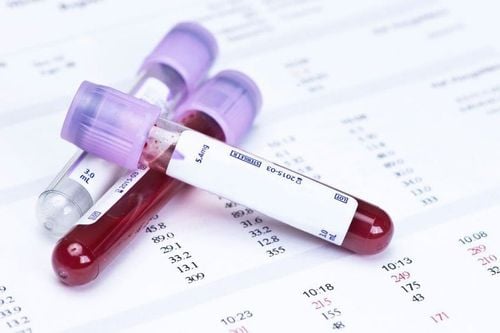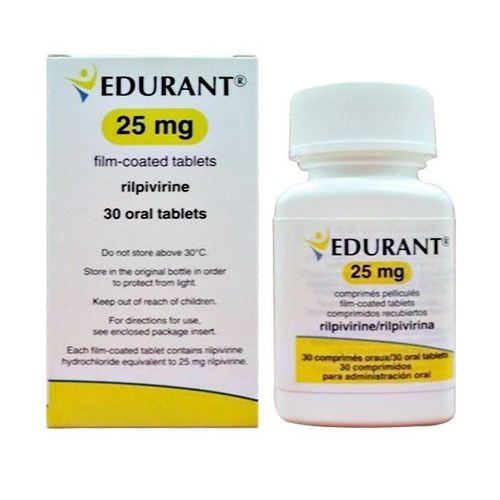This is an automatically translated article.
Hemophagocytic syndrome is a very rare and very dangerous immune disorder. There are two types of hemophagocytic syndrome, each with a different treatment regimen.
1. Is hemophagocytosis curable?
Hemophagocytic Lymphohistiocytosis (HLH) is a group of disorders that cause common manifestations that are abnormal proliferation and increased hematopoietic activity of histiocytes. Normally, our body recognizes its own cells and does not destroy the cells in the body. But in this disease, an abnormality of the immune system causes macrophages to destroy blood cells such as red blood cells, platelets and white blood cells.This is a very rare disorder and affects only 1 in 50,000-100,000. People divide phagocytosis syndrome into two types, including:
Primary form: Also known as familial form because this is inherited by recessive genes, under the causative gene located on chromosomes 9 and 10. Usually causes phagocytosis. symptoms in infants and young children. Acquired or secondary potential: Occurs after contracting the disease or in combination with some infectious diseases such as infection with EBV, CMV, E.coli, parasites, fungi, gram-negative bacteria, ... and leukemia acute leukemia, lymphoma, lupus erythematosus. This form can occur at any age, including children and adults, but is rarer in adults. Whether hemophagocytosis syndrome can be cured or not is a matter of great concern to many patients. Here are some factors that determine whether or not treatment will cure the disease:
For patients with primary or secondary phagocytosis who do not respond to other treatment, the cure is hematopoietic stem cell transplantation. However, not all cases can be performed with this blood cell transplant and blood cell transplantation must be successful to provide optimal treatment results. According to statistics, the 5-year survival rate of bone marrow transplant recipients is about 50%. With some cases of the disease can be severe, treatment is difficult or failed, especially in children under 2 years old or children who do not respond to treatment of previous diseases, the prognosis is very poor. If severe, often children have manifestations such as lethargy, exhaustion, persistent high fever, jaundice, erythema appear all over the body, possibly gastrointestinal bleeding, granulocytopenia is reduced to less than 1000/mm3 and Platelet count less than 20,000/mm3. Relating to pre-existing conditions: If the disease is pre-existing, if the disease is as serious as cancer, the effectiveness of treatment depends on the treatment response to the previous disease. In general, there are many factors involved in the treatment of hemophagocytic syndrome, only a blood cell transplant can cure it, but it also depends on the drug depending on the response of each person. According to statistics, the mortality rate due to the disease is quite high up to 40-60% despite active treatment.
2. Treatment regimen for hemophagocytic syndrome
Depending on the cause and other causative factors, give appropriate treatment, the principle of choosing treatment measures:
For patients with primary hemophagocytic syndrome or with factors In the family, there are indications for treatment with hematopoietic stem cell transplantation. For acquired hemocyte phagocytosis: If stable, undergo chemotherapy, then periodically monitor. If chemotherapy is stable but relapses, the patient is indicated for a hematopoietic stem cell transplant. Drug treatment regimens include
Treatment in the attack phase
Immunosuppressants:
Etoposide 150mg/m2 mixed in Glucose 5% intravenous infusion within 2 – 10 hours, the first 2 weeks of infusion 2 times/week, from week 3 to week 8 infusion once a week. Dexamethasone: Use at a dose of 0.3mg/kg/day intravenously for 2 weeks, halve the dose every 2 weeks until the patient is stable, then switch to oral, with a gastroprotector. Cyelosporin A: Use at a dose of 6mg/kg orally twice. Injecting spinal cord: Depending on the age, the indications are different. For Methotrexate: 6mg for children under 1 year old, 8mg for 1-2 year olds, 10mg for 2-3 year olds, 12mg for children over 3 years old; For Prednisolone: 4mg for children under 1 year old, 6mg for 1-2 year olds, 8mg for 2-3 year olds, 10mg for children over 3 years old. Supportive treatment:
Antibiotics: If the causative agent cannot be found, but the patient has persistently high fever and a large decrease in granulocytopenia, broad-spectrum antibiotics must be used against Gram-negative bacteria. such as Cefotaxime / Ceftriaxone + Amikacin, if staphylococcal infection is suspected, use Oxacillin/ Vancomycin + Amikacin. After 2-3 days, if the disease gets worse, it is necessary to switch to Cefepim/ Imipenem + Cilastatin or Meronem. Oral antifungal: This drug should be used from week 1 to week 9 (Fluconazole 50mg/day) Human Globulin infusion at a dose of 0.5g/kg/4 weeks. If the patient has severe bleeding or severe coagulopathy, fresh plasma, platelets, or red blood cell transfusions are needed. Treatment in the maintenance phase: Starting treatment from the 9th to the 40th week, this phase is used to treat patients with hereditary hemophagocytosis syndrome, secondary hemophagocytic syndrome is used only when Reactivation of disease, drugs include:
Etoposide: Use at a dose of 150mg/m2 intravenously every 2 weeks. Dexamethasone: 10mg/m2/3 days/2 weeks. Cyelosporin A: Follow up with the initial dose to maintain 200μg/l and monitor serum creatinine.
3. Monitoring and evaluation during treatment
Monitoring and evaluation when treatment is very necessary, to be able to assess the effectiveness and when to end treatment. Some things to monitor during treatment include:
During the aggressive phase of treatment (first 8 weeks), regular blood tests, CRP should be checked every week to monitor disease progression. Every two weeks liver function tests, ferritin, triglycerides, coagulation, or recheck tests may need to be repeated whenever necessary for treatment Treatment response: Usually after treatment duration from 2 to 4 weeks with symptoms such as: No fever, small spleen, platelets greater than 100,000/mm3, normal blood fibrinogen, decreased ferritin. Criteria for discontinuation of therapy only in complete remission provided there are no signs such as fever, hepatosplenomegaly, neurologic abnormalities, hemoglobin, platelets, leukocytes, normal granulocytes, ferritin, and enzymes. normal liver. However, it is still necessary to closely monitor the patient to detect reactivation of the disease. The main regimen in phagocytosis is immunosuppressive drugs, chemotherapy and, if necessary, a bone marrow transplant. However, this is a very dangerous disease and the patient has a high risk of death even with proper treatment.
Please dial HOTLINE for more information or register for an appointment HERE. Download MyVinmec app to make appointments faster and to manage your bookings easily.













